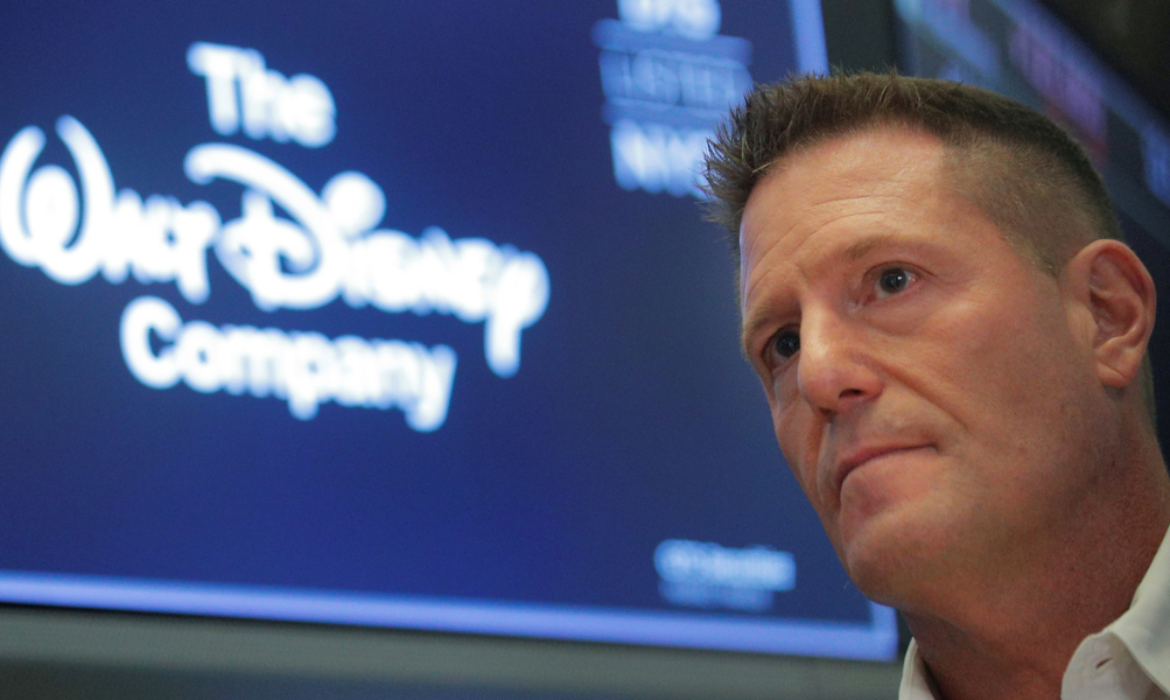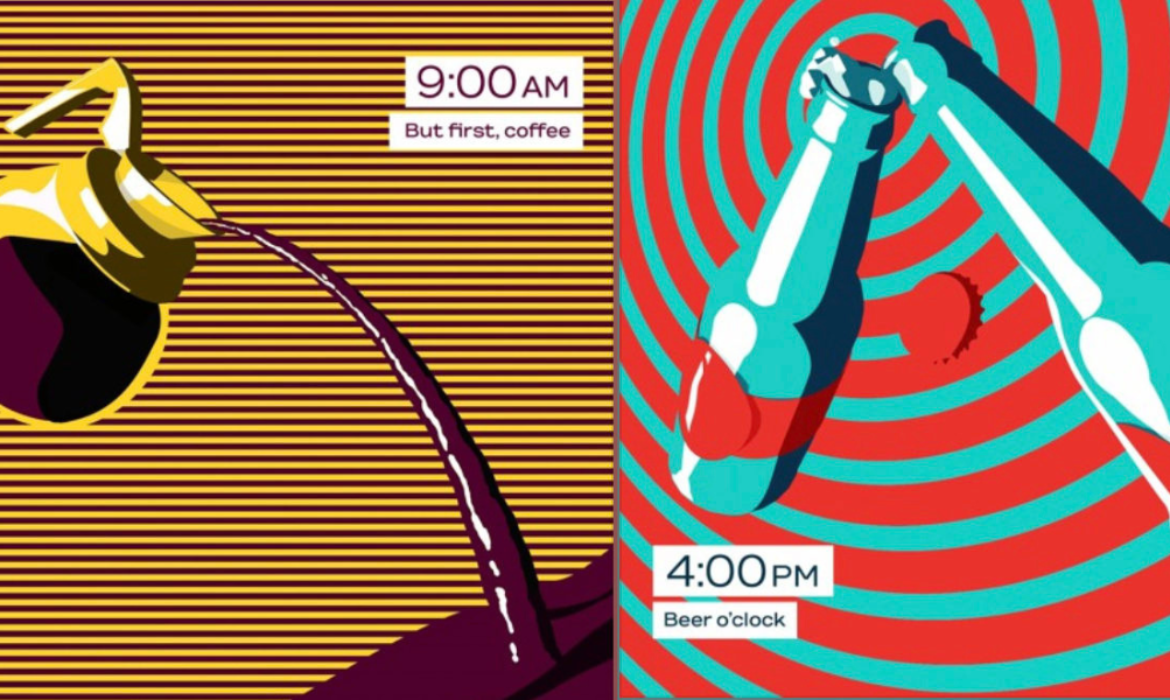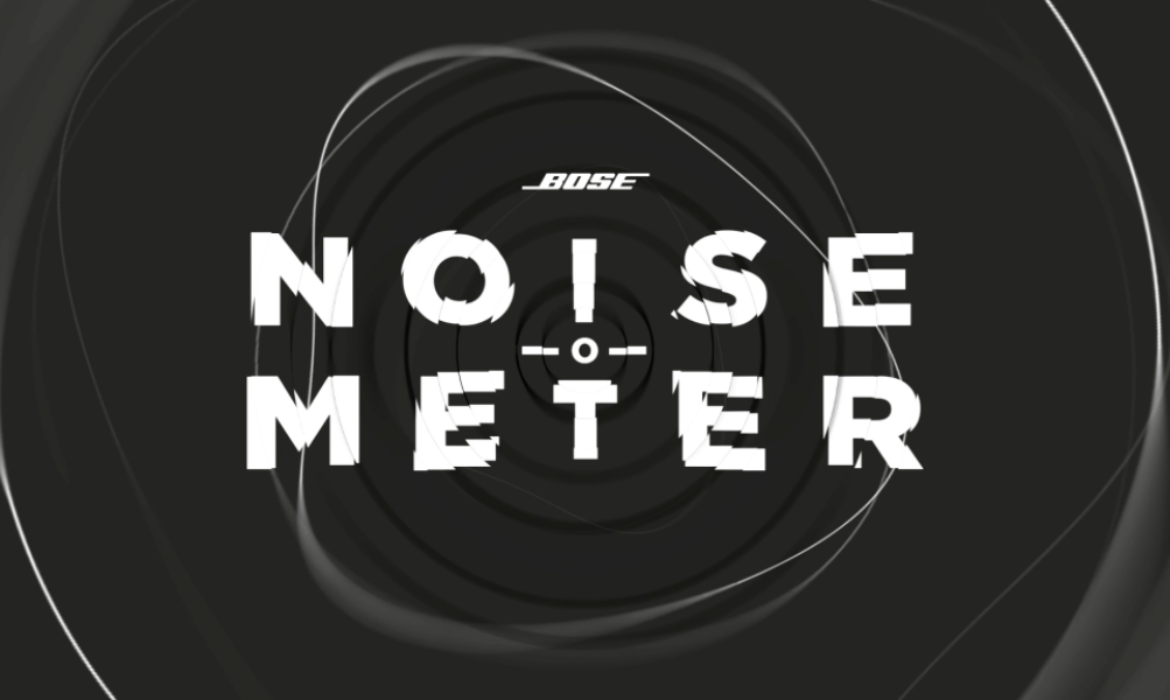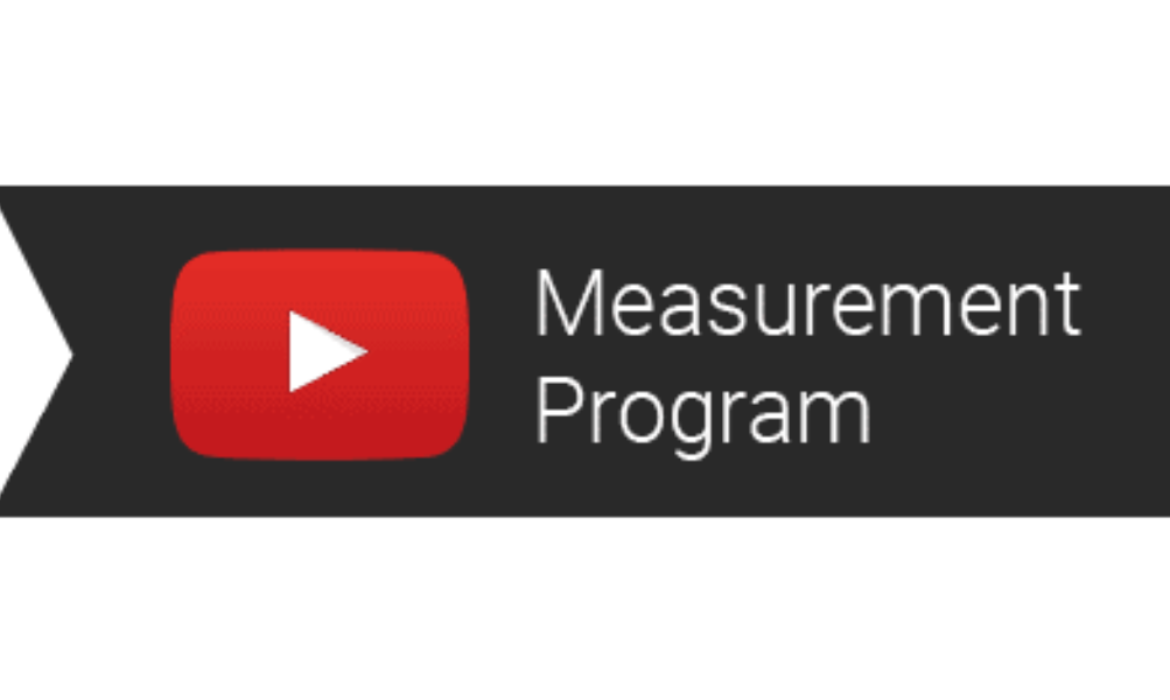Lotame Introduces Cookie Free Data Technology For Publishers and Marketers
Lotame, the world’s leading unstacked data solutions company is looking to help publishers, marketers, media, and agencies to leverage their first-, second-, and third-party data to create and analyze audience segments with a new suite of data enrichment products called ‘Lotame Panorama’.
The suite will help users find customers, increase engagement and growth revenue across the cookie challenged web browsers like Safari, Chrome and Firefox, mobile devices, and OTT environments.
Jason Downie, chief revenue officer, Lotame, said,
“First-party data is a valuable asset, but unfortunately it doesn’t provide the scale marketers need. Bridging together customers’ online and offline lives has been a persistent industry dilemma that was made even more complicated with recent browser changes. To solve for this, we developed Panorama which enables a fuller view of activity that is actionable across a connected ecosystem, even in cookie-challenged or first-party-cookie-only environments.”
Unwrapping data enrichment services
Panorama offers two solutions, one for marketers and agencies, the other for publishers and media companies. Lotame has unveiled three data enrichment services powered by Cartographer, Lotame’s ID graph technology.
- Panorama Insights: It offers a varied set of curated data tools and analysis for better storytelling, prospecting, segmentation, and modeling without cookies needed. It connects users’ first-party data to second and third-party data across the web, mobile, and OTT devices from 250+ online and offline data providers.
- Panorama Buyer: It ensures that media buyers connect customers’ attributes across first-, second- and third-party data to create an addressable audience in the cookie-challenged environment.
- Panorama Seller: This allows publishers to monetize their inventory across the web, mobile, and OTT through direct or programmatic advertising. It also enables publishers to set exact CPM’s in cookie challenged environments.
Also Read: Prebid Server Aims To Ease Header Bidding For Programmatic Advertisers
Panorama launches as publishers and others that rely on extensive data sets may have to struggle to find the scale they need. Lotame has appointed Ruby Brenden as head of data products to drive Panorama Insights forward. Brendan said,
“I have spent the last decade helping innovative marketing companies launch products. I am excited to launch Panorama, a solution that is exactly what the industry needs as third-party cookies start fading out. Insights will give marketers and agencies a single, trusted place to uncover relevant data stories and build smarter, addressable audiences, which means better advertising for consumers.”
Customers Signing for new Lotame Panorama products
Companies like Procter & Gamble and IPG’s Cadreon have already signed up for the new Lotame Panorama products.
Clients agree and testify,
Paras Mehta, Business Head – India, at Cadreon said,
“Understanding customer attributes and behaviors is key to our data-driven strategy when working with advertisers. Data enrichment using high-quality second and third-party data like Lotame’s enables us to draw insights we wouldn’t have access to with first-party data alone. We look forward to leveraging more of Lotame’s data solutions to deliver the exceptional service and results Cadreon is known for.”
Tim Hung, marketing director and lead of media, P&G Hong Kong & Taiwan said,
“Improving the lives of consumers around the world isn’t just our mission, but our daily practice..This requires getting to know those customers through the use of high-quality second and third-party data vetted and verified by Lotame. As cookie blocking becomes more prevalent, data enrichment solutions like Panorama will become even more important for global brands like P&G to understand customers and engage with them in meaningful and respectful ways everywhere they are.”
Partners at launch include Domo amongst others. Jeff Skousen, GM, North American Corp/Ent Sales, at Domo said “We’re excited to partner with Lotame to power Panorama Insights.” He further added,
“By dynamically integrating data and delivering live visualizations, Lotame is providing brands bespoke audience real-time insights in a digestible, actionable format to improve analysis, prospecting, segmentation, and data modeling.”
Facebook’s “Shop” Feature Breaks The Wall Between Social Media And Ecommerce
Facebook has recently launched an option of “Shops” on its social networking platform. This Will allow its 2.6 billion users an opportunity to shop while browsing through their favorite social networking website.
As the demand for the e-commerce market rises, Facebook sees this as an opportunity and is ready to cash more money. Facebook “Shops” will provide room to merchants, SMB, and product companies to build a virtual store on Facebook. Facebook is calling it “Social commerce”.
“We want to give people a place to experience the joy of shopping versus the chore of buying. And we want to help small businesses adapt and make it easier for people to discover and shop for things they love,” Facebook said in a press release.
To make things easy and secure, the products that will appear on Facebook and Instagram as the ad will not be linked to any third-party website or server. Instead, it will be linked to a zippy on the Facebook portal which will take the user to a catalogue from where the user can choose or purchase the product. It will also show the saved card details if the user has ever purchased from Facebook or any of its applications.

Image credit- Facebook.
Live shopping experience:
Facebook will also provide live shopping features on its platform. According to Facebook, People have always been showcasing their products in live videos. Now, they can link these products with their store. The products will appear on the bottom of their live feed. By tapping on the product on their screen users can get all the details of the product. Live shopping feature will be available worldwide to its users!

Image credit – Facebook.

Image Credit – Facebook
“Shops” will be an integral part of the Facebook family. Users can save products in their cart on Facebook, and complete the checkout process on Instagram, or vice-versa. Facebook aims to target small vendors for his aspirations, and nearly 1 million users have registered to be a part of this experiment.
The other principal dissimilarity from past commerce enterprise is that Facebook “required the small businesses to go all-in on our tools,” Zuckerberg said.
The platform is free for everyone and Facebook is partnering with other tech giants to provide services at the back-end.

Image credit – Facebook.
Zuckerberg further stated, “Rather than charge for Shops, we know if it’s valuable they’ll want to bid more for ads.”
One of the key partnership deals is made with “Shopify”, According to Facebook, in just a few clicks you can operate a Facebook shops account from Shopify.
Shopify founder and CEO Tobi Lutke said, “It’s an incredible new reality in the retail space to have these tools natively in the Facebook platform,” he further mentioned, for small businesses it’s very crucial to find new customers.
CEO Tobi Lutke added, “Communications is incredibly important, for so long that’s been monopolized by large CPG brands on television.”
According to him instead of going to different levels of media and advertisement, sellers will be able to reach directly to the customer. “The DTC industry, as some people call it, really happened on top of Facebook and Shopify.”
With Facebook focusing more on small scale businesses adding Shopify having the strength of entrepreneurs, the model looks like a rival of Etsy and doesn’t seem to target retail chains like Target.

Image credit – Facebook.
According to the Zukerberg and Lutke analysis, this model will help to empower small-scale businesses. Helping those sellers who are genuine, and want to provide efficient services to their customers. The model will help small businesses to highlight their product in the market without expensive advertising. As most of the small scale businesses can’t afford the luxury of advertisement.

Image credit -Facebook
The users will also be able to earn rewards for their purchase. Rewards will be known as loyalty points. Facebook will motivate the sellers to provide these points to the customer on their purchase. This will help them to lure more customers. Users will be able to easily keep track of their loyalty points.
TikTok Appoints Former Disney Chairman As New CEO To Capture New Markets.
- Disney veteran Kevin Mayers who oversaw the launches of Disney+ and ESPN+ is leaving the company after 27 years to become the new CEO of TikTok.
- Mayer will take the lead on ByteDance’s music, gaming, and emerging business along with heading TikTok.
- Mayer will start on June 1 and report directly to Bytedance CEO Yiming Zhang.
- TikTok had an immense impact on the music industry and grabbing eyeballs of gaming and esports companies.
TikTok appoints Kevin Mayer as the new CEO after being poached from Disney. Kevin Mayer who was passed over for the Disney CEO role is taking a jump from the entertainment industry’s most esteemed names to one of its most dynamic new arrival.
TikTok’s new CEO plans to explore business opportunities in music and gaming as the company looks to capitalize on a recent increase in app downloads. Mayer, head of The Walt Disney Company’s direct-to-consumer and international business said in a statement,
“I’m thrilled to have the opportunity to join the amazing team at ByteDance. Like everyone else, I’ve been impressed watching the company build something incredibly rare in TikTok – a creative, positive online global community – and I’m excited to help lead the next phase of ByteDance’s journey as the company continues to expand its breadth of products across every region of the world.”
Advertisers and brands taking advantage of music trends
TikTok is a significant player in the music industry for discovering new artists and making songs to hit status. The platform contributed to the grand success of Lil Nas X’s record-breaking “Old Town Road” and more recently with chart-toppers like Doja Cat’s “Say So” and Megan thee Stallion’s “Savage,” which are all featured in the TikTok videos.
Advertisers have found new ways to use TikTok music and dance trends to their advantage in order to drive brand awareness among the Gen Z audience. Brands like e.l.f. Cosmetics and Warner Bros. have used original music and dance challenges to attract the audience and generate billions of views and user engagement on the app. As quoted by Business Insider, Evan Horowitz, CEO of the creative agency Movers+Shakers said,
“I think the nature of TikTok as a platform is that it’s one. It’s only natural that brands that create really good music.that the community on TikTok really resonate with, that music can start to trend and be successful outside of the platform.”
Gaming and esports companies jumping onto the bandwagon
Video games companies and esports brands have shown keen interest in the TikTok app as it continues to be popular among Gen Z users of the app.
Many esports brands like FaZe Clan, Team SoloMid (TSM), and 100 Thieves have officially created verified accounts whereas video game content is slowly taking up TikTok’s content recommendation landing page (ForYou). It’s too early for gaming creators on the platform even though esports companies are slowly and carefully exploring TikTok in recent months. Jason Wilhelm, CEO of TalentX Gaming told Business Insider,
“For TikTok, they haven’t really found what is the best way forward for gaming yet. You need a lot of requirements in order to stream video games. TikTok obviously is not set up for that right now, but that is something that we’re going to be figuring out.”
TikTok has seen a significant surge in users since the pandemic hit U.S – 315 million downloads across the iOS and android app stores in 2020 Q1, that’s the most download for one app in a single quarter as per mobile data analysis group Sensor Tower.
Also read: YouTube Shorts: Will it be Able to Capture Tik Tok’s Audience?
Financial Report Card Of The Global Giants And Industries In COVID-19
Media companies are facing distress owing to the pandemic crisis, particularly those relying on advertising revenue. The current situation is precarious that compelled companies to roll out furloughs, pay cuts, or layoffs.
Even though publishers are recording high traffic, there is a mismatch in demand and supply in the ad market. Subscriptions are a silver lining for publishers but again sustainability is in question. Many businesses are impacted due to cancelled live events like sports that would bring a vast sum of revenue. Newsstands sales have also witnessed a fall.
Keeping the above factors in mind, below is the analysis of leading media companies’ financial and quarterly reports and their progress in this crisis.
CONGLOMERATES
Bertelsmann: Ad funded businesses were affected while music, services, and education business performed well.
The German media conglomerate Bertelsmann’s revenue declined by 2.7%. The advertising-funded business Q 1 was “highly affected” by the pandemic. Within the digital business RTL Group specifically, the revenue was down 3.4 % owing to the cancellation of ad bookings at the start of March or postponement of productions.
Music business BMG, its Arvato services business and its education business performed well. Subscription to the online streaming services was up 34% Y-o-Y.
Comcast/NBCUniversal: Broadband business upticks whereas rolling out Peacock streaming service.
Comcast is a large company with its broadband business marks an uptick with signups. and revenues up by8.8%. On the other hand, its theme park, TV and film production business is on hold.
NBCUniversal and newly acquired Sky TV cannot broadcast live sports. The company expects the advertising business to be down significantly in Q2
NBCUniversal Q1 revenue was down 7% and it rolled out ad-supported Peacock streaming service to Comcast customers in April.
Disney: Theme Parks and Sports Broadcast Shut, Disney+ subscribers up.
The crisis led to shutting down of theme parks, and productions and theatre movie releases were put to hold. Ad revenue at its TV business was affected as ESPN couldn’t air any live sports.
However, it stepped up the launch of ad-free streaming service in European countries. Disney+ had 33.5 million subscribers by the end of Q1 and an average of $5.63 in monthly revenue per paid user. Disneyland Shanghai did reopen, at 30% capacity on May 11.
WarnerMedia (owned by AT&T): Q1 Revenues severely hit.
Recently, folded its Xandr advanced advertising unit into a bigger WarnerMedia business.
Q1 revenues of WarnerMedia was down 12% on the year-ago quarter to $7.4 billion due to lower ad revenues in March on sports cancellations. Movie productions are also on hold.
PUBLISHERS
News Corp: Circulation and Subscription revenue grows, Ad revenue takes a hit.
Rupert Murdoch’s News Corp includes various leading and established brands like The Wall Street Journal, The Sun, and many more in U.S, U.K, and Australia.
Overall revenue declined 7.8% to $2.27 billion in Q1 due to weak ad business, low ad revenues, and negative currency movements. April ad revenue for Dow Jones declined 20% from the prior year whereas for News Corp Australia and News UK fell by more than 45% which includes negative currency impact.
The Wall Street Journal reported circulation and subscription revenue growth by 1% reaching a record subscriber base of 3 million overall, of which 2.2 million are digital-only.
The New York Times: Focus on Subscription Revenue to thrive in the post coronavirus world.
The NYT is leading more emphasis on subscription revenues to reduce its dependency on ad revenue to be in a better position and thrive post coronavirus world.
NYT recorded the highest quarterly increase in new digital-only subscriptions-up 587,000 in Q1 -leading to a 5.4% increase in subscription revenue to $285.4 million. Ad revenue fell by 15% and likely to fall further in Q2 somewhere between 50% and 55%.
“Other revenues” segment is estimated to fall around 10% as licensing revenue from Facebook News is expected to be “more than offset”- by lower revenue from its live events and its TV series.
TV AND CABLE
Discovery: Their channels are new sports.
Discovery CEO David Zaslav on the Q1 earnings call said, “Our channels are the new sports — the numbers are huge” around its lifestyle channels like HGTV, Food Network, and DIY. The engagement with the characters and talent is enormous. Discovery is also saving money productions through the pandemic as the film shows from home.
Total revenue declined from 1£ in the first quarter to $2.68 billion and expects advertising revenue to fall significantly in 2020. Many sports events are postponed and 90% of the sports deals have force majeure provisions or provisions to not pay for the content that is not received.
Fox: Fox News gains the largest audience.
Revenue for the three months to March 31 rose 25% supported by the forecast of Super Bowl in February, an increase in political advertising, and growth in affiliate revenue. But in March entered coronavirus crisis leading to the postponement of sports events and suspensions of entertainment shows.
80% who signed up for Fox Nation streaming service from Fox news continued to become paying subscribers and advertisers from sectors like technology and communications looked for the transition from sports buy to news buy. Ad revenue within local TV stations to be down 50% from last year.
ViacomCBS: Streaming revenue continues to grow and more on its way441.2 b
Revenue for Q1 fell 6% to $6.67 billion of which advertising revenue marked a 19% drop though a comparison to last year would be unfair when it aired Super bowl and basketball tournament.
Streaming continues to grow- domestic and digital revenue up by 51% to $471 million and had 13.5 million streaming subscribers. It intends to build “a broad pay streaming product in multiple markets” over the next 12 months. It announced a distribution deal with YouTube TV, which will carry 14 ViacomCBS channels
DIGITAL GIANTS
Alphabet or Google: Faring well in this crisis and a better situation.
Q1 revenue stood at $41.2 billion, up 13% Y-o-Y basis(including Google cloud revenue and the ‘other bets’ segment).
According to CFO Ruth Porat, Youtube’s March revenue “decelerated to a year-on-year growth rate in the high single digits” and Google Network March revenue declined “in the low double digits.”
Google Cuts Marketing Budgets by 50%, Freezes Hiring, and launched a “Journalism Emergency Relief Fund”.
Baidu: A closer watch on the signs of recovery in the upcoming result.
Chinese advertising giant Baidu was the first to report the coronavirus crisis set to affect media companies and expect a revenue drop of between 5% and 13% due to advertiser pullback.
In April, it suspended updating content on certain newsfeed channels within its app due to government directives which may impact its marketing services revenue. On May 18, Baidu will give the next quarterly update, and would be worth watching whether there is any recovery in the ad business.
Amazon: The advertising business grew as directly related to eCommerce sales
Amazon’s Q1 revenue soared as consumers quickly shifted to shopping online amidst the coronavirus crisis. Conversely, revenue rose 26%, and profit dropped 29% compared to last year’s quarter. The cost grew to finish the surge in orders
In the financial statement, the ‘other’ category is advertising business- revenue grew by 40% to $3.9 billion in Q1. The growth is consistent with a little downward pressure in March but no major impact as its directly related to eCommerce sales. ‘
Facebook: Post Strong Earnings, Exceeds Projections
Facebook ad revenue grew by 17% Y-o-Y to $17.4 billion despite the instability in the digital ad market due to COVID-19.
Facebook saw strength in the advertiser’s vertical- gaming, technology, and e-commerce whereas travel and automotive were the weakest verticals in the first three weeks of March.
Facebook had Pledged $2M Grant Funding To Support Publishers Financially.
Snapchat: Users and Revenue Increases, ad spend declines
Snapchat reported in its Q1 2020 earnings – strong gains in both users and revenues but a dip in advertiser spend despite the growing concerns about the coronavirus pandemic. the company reported a 44 percent (Y-o-Y) increase in its first-quarter revenue to $462 million. Snap benefited as people used animated lenses to keep in touch with loved ones in this lockdown. Snapchat’s daily active user (DAV) base reached 229 million.
Direct-response advertising accounts for more than half of the company’s revenue and clients in sectors like gaming, e-commerce, and consumer packaged goods continue to spend even during the crisis.
Twitter: Work in progress over AdTech concerns
Twitter’s user growth jumped in March as people rushed to check the latest news updates related to the coronavirus. Despite a 9% growth in daily users, revenue was up only 2.6% to $807.6 million and reported a loss of 8.4 million in Q1 results.
In comparison to its competitors, Twitter doesn’t have a direct-response advertising business. Therefore, the company is improving its mobile application promotion products and rebuilding its ad server which is expected to be up and running by Q2.
Wunderman Thompson Brings Agency Office Buzz To Employee’s Homes.
COVID-19 has compelled the world into self-isolation which means working from home indefinitely- which is challenging for highly collaborative and creative industries like marketing and advertising. Technology bridges the gap of connectivity but nothing can replace the buzz that comes from working in a busy agency. Therefore, Wunderman Thompson Canada is keeping you company with the ambient noise of an agency office from the pre-pandemic times.
The 8-hour soundtrack spans from 9 a.m coffee to 4 p.m happy hours, every elevator ping, chatter, and email notifications of a typical office day, recorded by the agency’s remote employees. The audio is called ‘Isolation Station’ on SoundCloud and is hoping that this tracklist might recreate the familiar and nostalgic buzz which will help employees feeling sick of working from home in the pandemic, get the feel of a more productive setting. Even the track names remind of office life with titles such as “But first, coffee” and “Beer o’clock”.
Wunderman Thompson Canada executive creative director Ari Elkouby said that they tapped real Wunderman Thompson Canada employees to record themselves having conversations with colleagues over Microsoft Teams and on their mobile devices to make the soundtrack truly authentic.
“We created a story map over the course of eight hours and got employees to contribute to different parts of the day. That dialogue was mixed over an audio bed of office ambient sounds to complete the track.”
Ari Elkouby also mentioned that Isolation can be scary and less ideal for many, however, this is to show the team and industry that we are together and provides much-needed comfort in a creative and fun way. Who knew that a conference room discussion meet can be so nostalgic?
This is similar to a campaign from the New York Public Library, in which the sounds of the bustling New York City were recreated.
This is also an interesting read: Noise-O-Meter By Bose Rewards Rising Noise Level With Discounts On Its Headphones.
Privacy Sandbox By Google Shows Backdoor To The Third-Party Cookies.
For the last two years, Google has been working to remove third-party cookies from it’s Google Chrome browser. Moving forward with this aspiration Google recently announced testing some of its “Privacy Sandbox” proposals. Google wants to test the algorithm with other exchanges and demand-side platforms. It seeks to examine the process of implementation and ways to deliver a better-guarded program to its users. Google will also make sure that this solution works inside the policies of advertising auctions.
It was in late April when Google made its big announcement. Google revealed its intentions on the “Bit Request Signal Experiment.” The announcement was made by a post on GitHub, which is a collaboration stage for software developers. Google invited advertising tech firms to take part in the testing so that they can receive some real-time algorithm test results. They affirmed the uncertainty of dates for live testing of Privacy Sandbox. They still wanted ad firms to respond to them, affirming if they are enthusiastic to help.
Soon speculations and news started flooding the tech industry!
“This is an early-stage concept and we don’t have more details to share right now, We plan to publish updates and progres s in GitHub as part of the process.”, quoted a Google spokesperson on GitHub.
Google team declared discontinuing support for the third-party cookies in January. Providing an explanation stating that they want to encourage publishers, advertising companies, and other providers of browsers to come up with a new set of rules which are user-privacy centric and follow open measures for the web.
Privacy Sandbox was launched in August, the idea was to innovate the ad recurrence and behavioral advertising. Aimed to help them work on the web without using third-party cookies. In a mega event with, 163 giant tech organizations like Apple, Facebook, Axel Springer, The Washington Post, Criteo, The Trade Desk, and even Google. All are requested to share their views via. World Wide Web Consortium or GitHub to help the project succeed.
A member from the “RTB group,” from Google posted on GitHub. Sharing insights on the bigger picture and a bit clear version of the cookieless browsing. Explaining the process, he talked about how user targeting will be done. He introduced the machine-learning algorithm known as “Federated Learning of Cohorts” which will be used in the working of cookieless browsing. Further, he explained that the algorithm will group people into different segments of the audience by understanding their behavior, likely by their browsing history.
He stated that this will improve the privacy of the users. This algorithm isn’t designed to target any user in particular. Instead, it will target a group of audiences. This group is also be known as “FloCs”. The algorithm is designed to group people on the basis of their similar interests.
Google posted on GitHub stating:
“Exchanges could offer a uniform RTB interface for aggregated audience targeting to bidders regardless of the data source,”
Another post that surfaced on GitHub from Google stated the following:
“Exchanges can explore the separation between contextual and user interest components in the RTB data flow, along with hosting the ad selection logic that needs access to both components (for instance, brand safety checks for a product retargeting ad) in a sandbox.”
Google provides an exchange with options to set a “Privacy budget.” According to the budget, an exchange can request a particular unit of data. If the data limit will surpass the budget, it will lead to an error, or as a consequence the data will be preserved in greater privacy. Presenting an option for user privacy, it can easily be determined that how much data needs to be revealed?
Google is beseeching bidders and exchanges to run real-world small scale “RTB” experiments. This will help them to test the algorithm real-time bases and with live scenarios.
Tom Kershaw, chief technology officer of Rubicon Project and a member of the World Wide Web Consortium’s Improving Web Advertising Business Group, said that they welcome the proposals. But the project is in the exceptionally fundamental stage.
Another statement came from Kershaw, chairman of the Prebid.org ad tech industry organization stating that “These are experiments with a capital E, We support these initiatives but there is not a single proposal on the table close to being adoptable right now. A ton of work needs to be done.”
Another member of the Improving Web Advertising Business Group states that the project is in its evolution pipeline and it’s going to take a long time to develop a technical standard.
He also added “It’s great, given the implications of what’s at stake, that the advertising arm of Google is attempting to implement what the browser arm is doing. It’s a really important step in the process.”
Noise-O-Meter By Bose Rewards Rising Noise Level With Discounts On Its Headphones.
Wunderman Thompson and Bose launches Noise-O-Meter to bring noise-cancelling savings to loud homes.
The new normal for millions of office goers is Working From Home (WFH) owing to COVID-19 pandemic. Many are able to maintain their productivity while working from the home offices but it may not be true for all. The volume indoors can be so high that the streets outside may sound calm and quiet.
To combat this cacophony, Bose is taking a singular approach and offering savings on its newest and innovative noise-cancelling headphones: The louder your home office, the larger your discount.
The new video ‘Noise-o-meter’ is developed by Wunderman Thompson, Dubai, and launched it in UAE. It measures ambient noise levels and instantaneously converts the decibels into discounts.
Bose Noise-Canceling Headphones 700 was launched in a new era of audio technology. Bose partnered with Wunderman Thompson Dubai, which engineered a unique algorithm for interpreting sound data. Thus, offering Bose fans a playful, enriching, and rewarding way to get their hands on these unrivalled headphones. The video ad is a blend of creativity and innovation.
Pablo Maldonado, Executive Creative Director at Wunderman Thompson Dubai, explains:
Unwelcome decibels are everywhere, from the whooshing hairdryer to that rattling washing machine and those boisterous neighbors. We wanted people to have some fun even as they save more and bring the calm inside. What makes Noise-O-Meter extra rewarding for us is the fact that it was dreamt up and brought to life from our home offices!
Real-Time Marketing Is Disruptive, But How Real It Really Is?
80% of business buyers expect companies to respond and interact with them in real-time suggests a report.
To date, most real-time marketing of leading brands focuses on demand generation, advertising, promotion, sales, and service. In Gartner’s report last August, Vice President analyst Mike McGuire said,
“Event-triggered and real-time marketing will have the biggest impact on marketing activities in the next five years…However, before marketers can realize the benefits of these technologies, they must first become proficient in predictive analytics and delivering personalized communications.”
The research firm reports brands are combining behavioral analytics and marketing automation to deliver real-time marketing efforts based on specific customer behaviors -but according to the findings, many marketers lack a ‘real’ business case for real-time engagement.
REAL PROBLEMS OF REAL-TIME MARKETING
The primary problem is, there are 7,000 marketing technology solutions but there is no way to connect and combine all the different systems together in a way to deliver sustainable real-time marketing efforts, points out Pegasystems Product Marketing Manager Andrew LeClair.
He shares that there is data all over the place but our systems and people are not connected. In his Discover MarTech presentation, he said,
“There’s a bunch of complexity. We’ve got inbound that’s over here and outbound over there — and paid is off on some island somewhere nobody knows. Not to mention all the other systems that touch the customer — things like customer service or billing applications.”
Marketers are unable to put multiple platforms together to create a centralized decision-making authority- one that can deliver actual real-time marketing events based on customer engagement and behavior.
HOW TO MAKE REAL-TIME MARKETING WORK

Image Credit: Marketing Land
With real-time in batches taking hours, hundreds of data integration, disconnected inbound and outbound- customers get lost in the shuffle.
During the webinar, LeClair said there is a need to find and deliver the next course of actions across channels in under 100 milliseconds. What does this mean?
This means real-time marketing is reliant on four specific capabilities- detection, data, decision, and delivery. At first, marketers must be able to detect or sense a customer’s need or opportunity. This means having systems in place to detect opportunity via simple events like conversations with CSR, or click-through emails. Conversely, there are non-events – events that were expected but didn’t happen.
After the events have been detected, data needs to be gathered before the next best action. According to LeClair, marketers need to access and assemble real-time information – customer’s emotions, intent, and behaviour. Data throws some light on their end goal and their location is also needed. All this information is essential to identify their context and what are their needs
After a comprehensive data assessment, the next best action can be determined and optimize for a real-time marketing opportunity. This may include delivering the right content at the right time, a personalized offer, or sending emails to follow up or more.
When marketers have fine-tuned these four capabilities, they can determine whether or not it’s time to sell to the customer, nurture the relationship or decide not to engage if it doesn’t add value to the given situation.
On the Under 100- milliseconds challenge, LeClair said in the webinar,
“From initial detection to assembling our data to making that decision to then executing — and how that impacts the customer experience — if we’re able to do all of that in less than 100-milliseconds for any channel, that is the ideal state. That’s where the best in class organizations live and breathe.”
BENEFITS OF REAL-TIME MARKETING
LeClair shared the results of the impact of real-time marketing efforts from a Total Economic Impact report conducted by Forrester on Pega’s clients. Companies generated $226 million worth of incremental revenue gains and $193 million in retained revenue on implementing Pega’s real-time marketing tools. He further commented,
“Because we’re sensing needs in real-time, we can be proactive in our retention efforts, reducing our churn, reaching out to the customer before they even get the chance to think about leaving, And that’s really, at the end of the day, how we optimize for customer lifetime value which is what all of this is about.”
Publishers Look For New Income Alternatives As Adtech Revenue Declines
The adtech industry has already been in an unstable situation for the past two years loaded with debt. It has been a challenging situation for major tech providers as well. Many of the companies were start-ups, fully leveraged, or hoping to come out with an IPO soon.
The COVID-19 pandemic only worsened the situation, for now, companies are to stay above water. Publishers fear that the two-year revenue gains will be over.
With the overconsumption of video content, premium ad placements have also declined. The publishers are also concerned about encountering payment uncertainty from ad exchanges and third-party revenue sources.
Co-CEO Rotem Shaul of Primis which is owned and backed by the Interpublic Group and Universal McCann.shares with Digiday the concerns from publishers and said,
The publishers we work with are prioritizing safety.
Therefore, publishers are rapidly finding new and stable ad formats and ad programs across platforms to continue with additional revenue streams ad reduce dependence on one ad format. The new ad format includes native, display, video advertising content, and scrolling videos that give way to new opportunities. Publishers are also using this quarantine time to improve and update the programmatic systems -page loading speeds, update ad tech stacks, and refresh the sales team on the latest developments.
CEO Roetm Shaul added with an increase in consumption, publishers should do everything they can and should partner with companies that will continue post-crisis too. They should look for new ways to diversify their ad tech portfolio.
All this would have been a little easier to experiment with vendors before the tightening of the economy as they had the luxury of freedom and money to test and determine the best solutions. Currently, the focus is on the cash flow with low pay or no pay, putting pressure on the managers to deliver revenue.
In this down economy, this will lead to a vicious cycle. Publishers will be hesitant to give a chance to small vendors for fear of being unpaid or will be enforced to replace ad tech. With these concerns, publishers will leave small companies and they will lose more money and business which will lead to bankruptcies or shutdown. This will create more worry over working with small vendors and publishers moving to bigger vendors.
Present scenario of publishers
According to Digi Day, Shaul said, “Publishers are frantically moving their businesses to safe havens like Google, Verizon, and other big companies.” Companies may not offer the best deals but have no uncertainty over the payments.
However, there are vendors like Freewheel (owned by Comcast), SpotX (owned by RTL), or Primis that can offer similar levels of stability. They are equipped to offer attractive deals and keep the revenue stream intact.
Again, Shaul said to DigiDay that at Primis, all publishers want to hear is about security and safety in these uncertain times. He added,
Even we feel the concerns from publishers. Fortunately, they do categorize us as a big company, as we are a part of IPG, and once they see the letters IPG and know that they will back us up, they relax.
This unpredictable time will teach new learnings. To drive fresh revenue streams, new ad programs are set up. For ad tech and publishers, these new practices for stability and innovation will be carried forward. The revenue-strapped publishers and vendors will stabilize, then sustain, and once again grow and prosper. It’s all these important learnings that will lay a new foundation for their relationships and campaigns in the future and make stronger business for both sides- vendors and publishers.
YouTube Reorganizes Its Measurement Program With Five New Partners
Google made notable changes to the line up of partners of its YouTube Measurement Program(YTMP) that debuted in 2017 to give advertisers access to trusted and independent solutions for driving and tracking the marketing performance of the video site.
Google made some tweaks to how it classifies partners in the YouTube Measurement Program and welcomed new partners to the program or specific categories. YouTube has made it easier for advertisers to search for the right service provider for their needs.
YouTube added five new partners – Channel Factory, Integral Ad Science, DoubleVerify, Sightly, and VuePlanner to the program. Existing partners include Pixability, Zefr, Tubular Labs, and Wizdeo -though it has dropped one of its founding partners who is no longer on the list ‘Open Slate’. Apparently, the brand safety company is at a contractual standoff with Google.
AdAge reports that Openslate refused to sign the new agreement with Google. It believed that the contract would limit what it can report to the clients when ads ran next to videos with sensitive or harmful content on YouTube like hate speeches, illegal substances, or violence.
Under new terms, without Google’s approval, OpenSlate would not be able to inform the client that includes Nestle, GroupM, and Procter & Gamble – if their ads run next to YouTube channel that has historically shared violent or inappropriate content.
OpenSlate told in an e-mail statement to AdAge,
“Advertisers rely on OpenSlate’s independent, third-party measurement to ensure they are running in suitable environments.”
It further says,
“Google is a valued partner and we endeavor to resolve our differences,”
A Google spokesperson told AdAge,
“We’re excited to expand the YouTube Measurement Program and look forward to working with the nine partners who have already signed on. We also remain open to any other third parties who help meet our clients’ needs joining the program in the future.”
After the reorganization, advertisers can search by services under the newly created categories: brand suitability and contextual targeting, content insights, and brand safety reporting. Partners will be classified and sorted based on these categories.
As outlined on the YTMP website, Channel Factory, Integral Ad Science, Pixability, Sightly, VuePlanner, and Zefr were added in the Brand Suitability and Contextual Targeting category while DoubleVerify and IAS were added to the Brand Safety Reporting category. Meanwhile, Pixability, Tubular Labs, and Wizdeo were added to the Content Insights category.
Also Read: Everything You NEED TO KNOW About Advertising On YouTube In 2020
As quoted in Adexchanger, David George, CEO of Pixability, one of the first companies to join in 2016 said, the time was ripe for a revamp.
“Simply put, there’s demand in the market from brands and agencies that want to work with third parties,”
YouTube is growing exponentially in terms of engagement and ad revenue. Although due to coronavirus led volatility, YouTube is facing a significant decline in CPM’s in some cases, however, YouTube drove $15 billion ad revenue for Alphabet in 2019.
Tony Marlow, CMO at Integral Ad Science said,
“For a platform that generates over 500 hours of new content every minute, it makes sense that they are constantly evaluating the efficiency of their programs.”
IAS has been providing brand safety verification since 2018 but it wasn’t under the measurement partner program until now. The measurement program also offers access to the participating partners to alpha and beta programs and additional resources.
Theresa Go, Pixability’s VP of platform partnerships said,
“There is an undercurrent of technical support we get through the program. We’re able to leverage Google to make sure we’re providing the best products we can in the market.”











